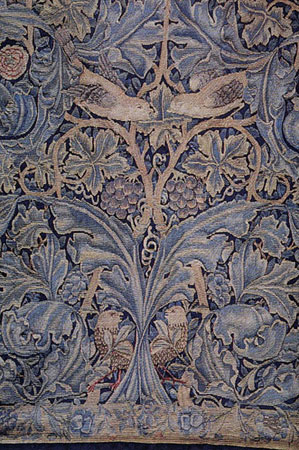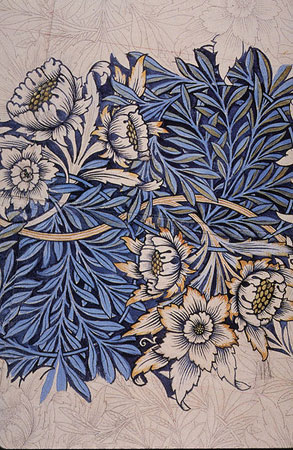In Styleture’s “Sultans of Style” series, we profile game-changing artists who have pioneered their way into the history books of design.
William Morris, born in 1834 in England, was a leading pioneer of the “Arts & Crafts Movement” in the 19th century. When it came to design, William Morris did it all: wall coverings, stained glass, carpets, tapestries, type face, furniture and more. In 1861, he founded “the Firm,” a collective of several of the most talented and important designers of the times. Some of his most famous creations were patterns including “Tulip & Willow” and “Acanthus.” He was also responsible for the “Gothic Revival” style and several architectural commissions including the “Red House” in Bexley Heath south of London.

Portion of Cabbage and Vine tapestry, William Morris's first tapestry woven at Kelmscott House in the summer of 1879.
His philosophy about design can be summed up in one quote: “Have nothing in your house which you do not know to be useful or believe to be beautiful.” We at Styleture couldn’t agree more.




